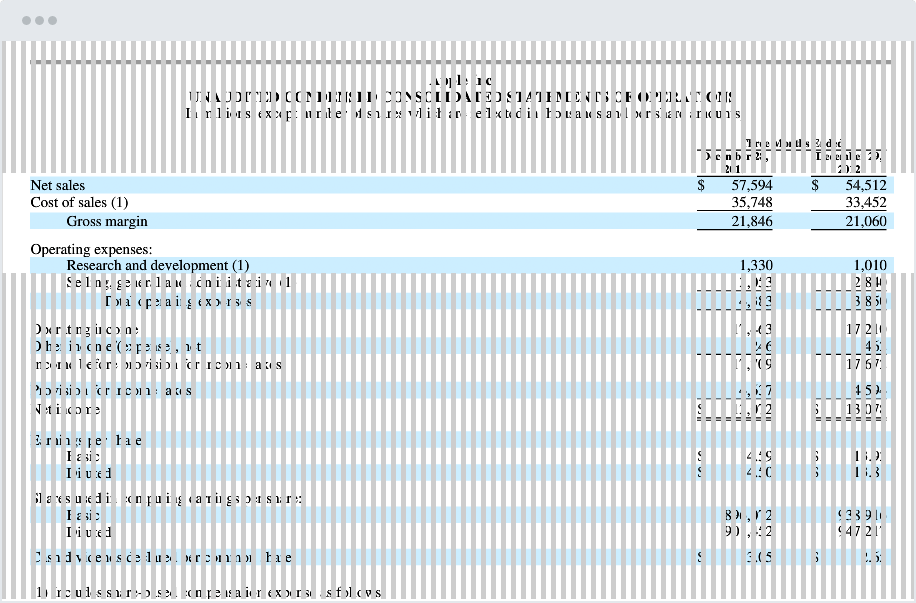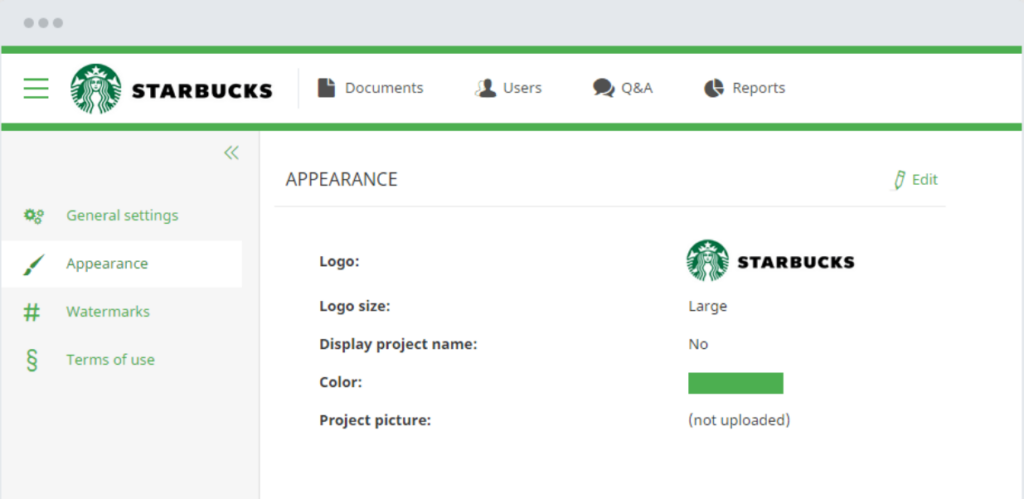
From finance to education, teams worldwide employ virtual data rooms for easy deal management, secure document sharing, advanced analytics, and effortless collaboration during critical business transactions. Unlike other solutions, this software offers robust security features, rich data management functionality, and ease of use, meeting needs across industries.
The proof is in the numbers: The virtual data room market is projected to grow from US$ 1.75 billion in 2023 to US$ 5.62 billion by 2031, representing a CAGR of 15.7%.
If you have found your way to this page, chances are you want to empower your next deal with a VDR. So, we invite you to discover how to create a secure and well-organized data room to make your transaction a breeze.
What is a virtual data room?
A virtual data room is a secure online repository for storing and sharing sensitive information, such as financial statements, legal documents, and contracts. The software features reliable security mechanisms, including data encryption in transit and at rest, dynamic watermarking, and granular access controls, which ensure the highest level of data protection for highly confidential information.
In addition, the platform is a safe virtual space for collaboration where multiple parties can work on documents, communicate in real-time, and manage workflows efficiently. Also, data rooms offer transparency and accountability by tracking every action with detailed audit trails, recording who accesses documents and what changes they make.
| Note: A virtual data room is also known as a virtual deal room, startup data room, investor data room, or data room for investors. |
- Capital raising and venture capital. Before making an investment decision, a venture capitalist studies and analyzes the corporate data of an early-stage company. Using a data room to review such data can significantly speed up the process.
- Legal teams collaboration. Having all required documents in a single centralized data storage space, legal teams can easily access and review documentation.
- IP management. Virtual data rooms can simplify the process of intellectual property management, as they allow creating a well-organized index of documents with fully controlled and traceable access.
- Real estate management. Real estate agents can upload video tours of real estate properties to data rooms and securely share them with potential buyers.
- Compliance and audit. Whether companies are conducting internal audits or responding to a regulatory investigation, virtual data rooms can help them arrange all the necessary documentation, control access to it, securely share it, and discuss it in one centralized place.

Next, we will learn how to create a well-structured data room with all up-to-date information and parties involved.
How to set up a data room: 5 easy-to-follow steps
Setting up virtual data rooms is easy and enjoyable if you perform a few simple steps, including the following:
1. Choose a suitable virtual data room provider
Matching data room software to your needs during the M&A or fundraising cycle determines the transaction’s pace and ease. Thus, we recommend you to consider the following points:
- Ease of use. VDR should be intuitive for all users, including non-tech-savvy people. In particular, searching for documents and folders within the data room should take seconds rather than minutes — and navigating the platform should require no previous technical background.
- Feature set. While some data rooms focus on a user-friendly interface with a limited set of features, others are more sophisticated and have quite a technical interface with lots of advanced settings. This is why matching the platform’s functionality with your needs is vital.
- Price. Depending on the budget, companies can choose between various pricing models, such as per-page, per-user, per-GB, or flat fee. The latter is considered the most transparent and more suitable for large organizations.
- Support. It’s hard to overestimate the importance of technical support since the qualified specialist’s assistance can be decisive at any transaction stage. Therefore, choosing a provider with 24/7 technical support via phone, chat, and email is best to ensure your team gets professional help whenever needed.
Top 3 data rooms
Overall rating:
4.9/5
Excellent

Overall rating:
4.7/5
Excellent

Overall rating:
4.6/5
Good
2. Determine the data room structure
The hierarchical file structure may differ depending on the use case. But if a document tree is logical, it facilitates quick access to data and, as a result, streamlines the deal
Here is a helpful example of how to organize files, but you can adjust it to your particular business needs:
| 1. Financial records | ✅Audited financial statements (last 3 years) ✅Balance sheet ✅Profit and loss statements ✅Cash flow statements ✅Pro forma statements (financial model) ✅Cap table ✅Financial reporting controls ✅Debt schedule ✅Financial metrics and projections ✅Third-party financial evaluations ✅Key metrics and ratios |
| 2. Commercial documents | ✅Market analysis reports ✅Customer database ✅Pitch deck ✅Marketing strategies and sales plans ✅Current sales pipeline ✅Competitive landscape analysis ✅Product development roadmap ✅Strategic partnership contracts ✅Historical and projected market share data ✅Key customer agreements and contracts ✅Customer retention strategies ✅Advertising and promotional content ✅Brand and trademark registrations ✅SWOT analysis of the target |
| 3. Operational documents | ✅Standard operating procedures ✅Quality control reports ✅Supplier agreements ✅Inventory management records ✅Health and safety policies ✅Incident reports ✅Facility lease agreements ✅Production capacity and utilization reports ✅Environmental audits and investigations |
| 4. IT documents | ✅Software and hardware asset lists ✅Network design and architecture ✅Cybersecurity protocols ✅Incident response strategies ✅Data protection and privacy policies ✅Technology integration roadmaps ✅IT infrastructure layouts ✅API specifications and documentation ✅IT service provider agreements ✅Software licensing and subscription contracts ✅Business continuity and disaster recovery plans ✅Data management and storage policies |
| 5. Tax documents | ✅Transfer pricing documentation ✅Tax returns (past two years) ✅Tax compliance records ✅Tax audits and ongoing disputes ✅History of tax credits and incentives ✅Tax liabilities schedule ✅Cross-border tax issues and implications |
| 6. HR documents | ✅Organizational charts outlining corporate structure ✅Leadership succession plans ✅Employee contracts ✅Employment agreements and offer letters ✅Compensation structures ✅Benefits policies ✅Labor union agreements ✅Employee turnover and satisfaction reports ✅Workforce demographics and diversity data |
| 7. Legal documents | ✅Articles of incorporation ✅Bylaws ✅Shareholder agreements ✅Key contracts and agreements ✅Intellectual property documentation ✅Litigation history ✅Compliance certificates ✅Government permits and licenses ✅Confidentiality and nondisclosure agreements ✅Regulatory filings and correspondence |
Note that the list may vary based on the deal or industry. For example, IP and software licenses are key in tech deals, while equipment leases and environmental documents matter more in manufacturing deals.
3. Upload documents
Once you have all the necessary documents, you can upload them to a virtual data room. Follow the steps below to ensure smooth data organization:
- Organize the folders. Ensure that your files are in their respective categories according to the structure you have set up.
- Use clear file names. Label your files clearly and consistently to avoid confusion. For example, financial statements should be named “Balance Sheet – 2024” rather than vague titles like “Document 1.”
- Upload in bulk. Data room platforms allow users to upload multiple files at once. So, use this feature to save time when uploading large volumes of documents.
Once all documents are uploaded, you can share a data room with authorized parties, such as potential investors, buyers, or advisors.
4. Set up permissions
The next step is to assign different access levels for folders, documents, or users. Advanced providers offer the following granular permissions:
- None. Users have no access to specific documents.
- Fence view. Users can only view parts of a document by moving a cursor, while the rest remains masked.
- View. Users can view documents but cannot print or download them. For Excel files, options may include viewing with or without formulas.
- Download encrypted file. Users can download an encrypted file that requires a code to open, adding a layer of security and enabling tracking.
- Print. In addition to viewing and downloading encrypted files, users can print documents.
- Download PDF. Users can download PDF files with watermarks. Administrators can track these downloads.
- Download original. Users can download files in their original format.
- Upload. Users can upload files, but this permission may be restricted to specific folders as necessary.

5. Confirm software settings
Finally, you should check your data room settings to ensure security and functionality. Here are the points to consider:
- User access. Using the “View as” feature, ensure that users can only view the documents and folders they are authorized to access.
- Security features. Double-check essential security measures like two-factor authentication, data encryption, and watermarks to protect sensitive information.
- Audit trail. Verify that the audit trail tool is active and tracks all key activities, such as who accessed documents and when.
The more secure and effective data room spaces are, the smoother and more efficient the deal-making process becomes. So, follow the steps above and optimize your platform for maximum benefit.
Why do companies use a virtual data room?
As mentioned before, virtual data room providers offer a multi-purpose solution to fulfill all needs related to secure data storage and sharing.
Specifically, virtual data rooms deliver easy-to-navigate storage, access security, protection of sensitive documents at rest and in transit, and state-of-the-art tools for improved collaboration. This is specifically what ensures simplified mergers and acquisitions, the due diligence process, initial public offering, fundraising, risk management, audit, and other data-driven deals.
So, here’s what you get by integrating virtual data rooms into your deal:
- Guaranteed compliance. Business transcends borders, but international dealmaking requires compliance with global and regional regulations. Most data room providers ensure compliance with such globally recognized standards as ISO, SOC, GDPR, HIPAA, and CCPA compliance. However, there are many local regulations as well.
- Document organization. Regardless of the amount of data, the data room software creates precise document trees to organize files in a structured way with automatic indexing. And even when you add, remove, or rename files, auto-indexing still keeps all documents in order.
- Security and privacy for sensitive data. To protect highly confidential documents, data room software offers data encryption, multi-factor authentication, user and file level access settings, watermarks, time and IP restrictions, and activity tracking. All this guarantees robust data and access security, which explains the accelerating demand for the data room software.
- Enhanced collaboration. Performing time-consuming due diligence or audit tasks becomes more straightforward with real-time task scheduling, progress tracking, monitoring key metrics, and sharing questions and answers in a Q&A module to automate the communication flow. That said, a data room is a communication booster for optimizing deal workflows.
Next, we invite you to learn the best practices for seamless data room operation.
Valuable tips for virtual data room maintenance
In addition to the basic knowledge on how to set up a data room, there are some essential VDR maintenance rules. By taking them into account, you will make your workspace relevant, safe, and branded.
1. Keep all the documents updated in real-time
Your data room should clearly reflect all changes no matter how fast business circumstances and the economic climate change. Therefore, delegate the task of updating documents to someone to ensure accuracy and protect against any discrepancies during due diligence, because they may be fatal to the procedure.
2. Maximize data security
The data room software is inherently ultra-secure, but you can take extra steps to reinforce it with robust security features. For example, Ideals offers restricted viewing, file permissions, multi-factor authentication, user security impersonation, and fence view for this. Ask the admin in your organization to set up extra security measures for access and work in a data room.
3. Protect yourself from intruders with session timeouts
Configurable session timeout is another way to make your data room immune to intruders. It allows getting the user session automatically closed after a set duration if the user has not logged out. It is a reasonably effective tool to prevent the unauthorized use of data. The vendors that provide this feature are Ideals and Onehub, allowing admins to change the set session timeout from minutes to days.
4. Brand your data room and be recognizable
Data room branding makes a company look professional and recognizable, which can be of particular value to startups. Top data room providers offer such advanced branding features as adjusting logos, theme colors, watermarks, invitation emails, headers, and footers.

We recommend implementing these tips to improve the security and efficiency of your data room.
How long does it take to set up a data room?
The time required to set up a data room can vary based on the following factors:
1. Complexity of the deal
Larger or more complex transactions, such as mergers, acquisitions, or fundraising efforts, may require additional time for setup. It includes coordinating multiple parties, organizing extensive documentation, and ensuring the platform meets all the deal’s needs.
2. Customization needs
If you require advanced customizations, such as specific branding, security settings, or unique user interfaces, this can add time to the setup process and take extra effort.
3. User access setup
Properly setting up access levels and ensuring users view only authorized documents requires careful planning, especially with diverse user groups. Therefore, the more data and users you have, the longer the setup might take.
4. User training and support
The time required to provide training or support depends on users’ familiarity with the platform, especially if the platform is complex or if a large group of users needs to be onboarded. So, user onboarding and training may take additional time.
Depending on these factors, data room setup can take from a few hours to several days.
Closing thoughts
Virtual data rooms are leading solutions for facilitating complex transactions with lots of sensitive data and participants. And if you consider a few simple but crucial setup recommendations, you can adapt the software to your needs and enjoy its outstanding benefits.
If you still need to decide on a provider, explore the top products on our main page.
Let’s recap the main things you need to know about a virtual data room and setting up the solution:
- Virtual data rooms are secure cloud storage solutions used for facilitating complex corporate deals.
- Though commonly used for financial and legal due diligence as part of M&A transactions, data rooms are also common in capital raising, audit, real estate, IP management, and legal teams’ collaboration processes.
- Virtual data rooms are ideal for compliance, data organization, confidential documents protection, and collaboration improvement.
- For efficient data room setup, you should choose the right provider for your needs, determine the preferred file structure, upload files, configure user permissions, and define terms of access.
- You can improve the data room performance by regularly updating data, employing robust mechanisms to protect it, setting up session timeouts, and branding a data room with your company’s look and feel.
FAQ
Which is the best data room?
Virtual data rooms may differ in feature set, storage size, security level, and other aspects. Therefore, your best data room is the one that matches your needs and the specifics of the deal you’re targeting. You can visit the main page to find your ideal data room solution.
Who sets up a data room?
Whether you set up the software yourself or with the specialists’ support depends on the selected provider. Many data rooms accompany the client during the entire setting up process, which makes it faster and easier. Once the initial setup is complete, the organization’s admins oversee data room operations.
Can you use Google Drive as a data room?
You cannot use Google Drive as a data room for corporate needs, because it lacks security measures needed to protect highly confidential files. In contrast to Google Drive, virtual data rooms offer end-to-end encryption, password protection, and advanced access controls.
What determines how long it takes to set up a data room?
In many ways, the data room functionality determines the setup duration. For example, with bulk upload, drag-and-drop, bulk user invitations, and the ability to upload documents in any format, users can complete a setup process in around 15-30 minutes.


